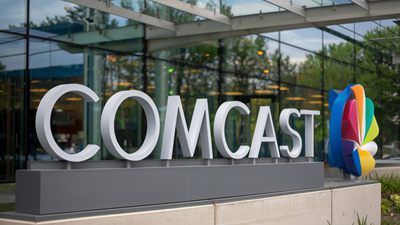UnitedHealth’s Growth Potential: How Rising Medicare Entitlements Are Shaping the Future
UnitedHealth’s Dominance in Medicare Advantage
Enrollment Growth and Market Share
UnitedHealth Group has seen remarkable growth in its Medicare Advantage enrollment, which has surged to approximately 9.4 million enrollees in 2024. This represents 29% of the total Medicare Advantage market, which itself has grown to 32.8 million enrollees, covering 54% of the eligible Medicare population. This is a significant increase from just 19% in 2007. The steady rise in enrollment can be attributed to several factors, including the aging baby boomer population and the financial incentives provided by the Medicare Modernization Act of 2003.
Financial Incentives and Government Payments
The Medicare Modernization Act of 2003 has played a crucial role in encouraging private insurers like UnitedHealth to participate in the Medicare Advantage program. The Act has led to higher payments to these plans—122% of spending for similar beneficiaries in traditional Medicare. In 2024, this translates to an estimated $83 billion in higher spending for Medicare Advantage plans. These financial incentives have significantly contributed to UnitedHealth’s growth trajectory within this expanding market.
Challenges and Regulatory Pressures
Rising Medical Costs
Despite the growth in enrollment and market share, UnitedHealth and other insurers face challenges related to rising medical costs. Higher-than-expected inpatient and outpatient care utilization has led to an increase in the medical-loss ratio, impacting profitability. This trend has been observed across the industry, with insurers reporting higher medical costs in their Medicare Advantage businesses, leading to stock declines and concerns about future growth.
Regulatory Changes
The regulatory environment for Medicare Advantage plans is becoming increasingly complex. Changes in the risk adjustment model and other regulatory pressures could dampen the growth momentum seen in previous years. The situation bears resemblance to the late 1990s when regulatory pressures caused significant issues for the Medicare+Choice program, leading to limited growth and exits from some markets. Insurers, including UnitedHealth, will need to navigate these challenges to maintain their growth trajectory.
The Broader Context of Medicare Entitlements
Economic and Demographic Trends
Medicare expenditures have been rising steadily, with total spending reaching $839 billion in 2023, accounting for 14% of total federal spending. This trend is expected to continue, with Medicare spending projected to rise from 3.1% of GDP in 2023 to 5.4% by 2053. The aging population is a significant driver of this increase, with Medicare enrollment projected to reach about 89 million by 2053, up from 67 million in 2023.
Funding and Financial Pressures
Medicare is funded through two trust funds: the Hospital Insurance (HI) Trust Fund and the Supplementary Medical Insurance (SMI) Trust Fund. The HI Trust Fund is primarily financed by payroll taxes, which covered only 36% of Medicare’s $839 billion costs in 2023, down from 73% in 1973. The SMI Trust Fund is funded mainly by the federal government’s general fund, with premiums covering only about 25% of its expenditures. The HI Trust Fund is projected to be depleted by 2036, necessitating reforms to avoid an 11% cut in Medicare spending.
UnitedHealth’s Strategic Initiatives
Cost Containment and Efficiency
To address rising medical costs and regulatory pressures, UnitedHealth has been focusing on cost containment and efficiency. This involves strategic investments in technology and data analytics to improve care management and reduce administrative costs. The company’s HouseCalls program, which provides in-home clinical assessments, is an example of such initiatives. In 2023, the program reached over 2.7 million patients, addressing medical, behavioral, and social needs, and closing more than 3 million gaps in care.
Quality of Care and Star Ratings
Maintaining high-quality care is essential for sustaining profitability in the Medicare Advantage market. The ongoing changes to the Medicare Advantage Star Ratings system are critical for payers to maintain margins and ensure high-quality care. UnitedHealth has been focusing on achieving 4+ star ratings, which are essential for receiving higher payments and attracting more enrollees.
Warren Buffett’s Investment in Chubb Ltd.
Investment Rationale
Warren Buffett’s recent investment in Chubb Ltd. highlights his continued confidence in the insurance sector. Chubb operates in the property and casualty insurance space and has demonstrated strong financial performance, with a record $15.2 billion in free cash flow in the past year. The company has consistently outperformed its peers in writing profitable policies and has raised its dividend for 31 consecutive years.
Relevance to UnitedHealth
While Chubb operates in a different segment of the insurance market, Buffett’s investment underscores the attractiveness of the insurance business model. Insurers collect premiums upfront and pay claims later, allowing them to hold significant “float” which can be invested. This model is also relevant to health insurers like UnitedHealth, which benefit from steady cash flows and the ability to invest in growth initiatives.
Future Outlook and Conclusion
Growth Potential
The future outlook for UnitedHealth remains positive, driven by the continued growth in Medicare Advantage enrollment and the aging population. Projections suggest that the share of all Medicare beneficiaries enrolled in Medicare Advantage plans will rise to 64% by 2034. This expansion presents significant revenue growth potential for UnitedHealth, given its dominant market share.
Challenges and Adaptation
However, the company will need to navigate several challenges, including rising medical costs, regulatory pressures, and the need for cost containment. Strategic investments in technology, data analytics, and care management will be essential for maintaining profitability and achieving growth expectations.
Conclusion
In conclusion, UnitedHealth is well-positioned to capitalize on the rising government Medicare entitlements and the growing Medicare Advantage market. The company’s strategic initiatives and focus on quality care will be critical in navigating the challenges ahead. Warren Buffett’s investment in Chubb Ltd. further underscores the attractiveness of the insurance sector, highlighting the potential for long-term growth and stability. As the healthcare landscape continues to evolve, UnitedHealth’s ability to adapt and innovate will be key to sustaining its growth trajectory.


